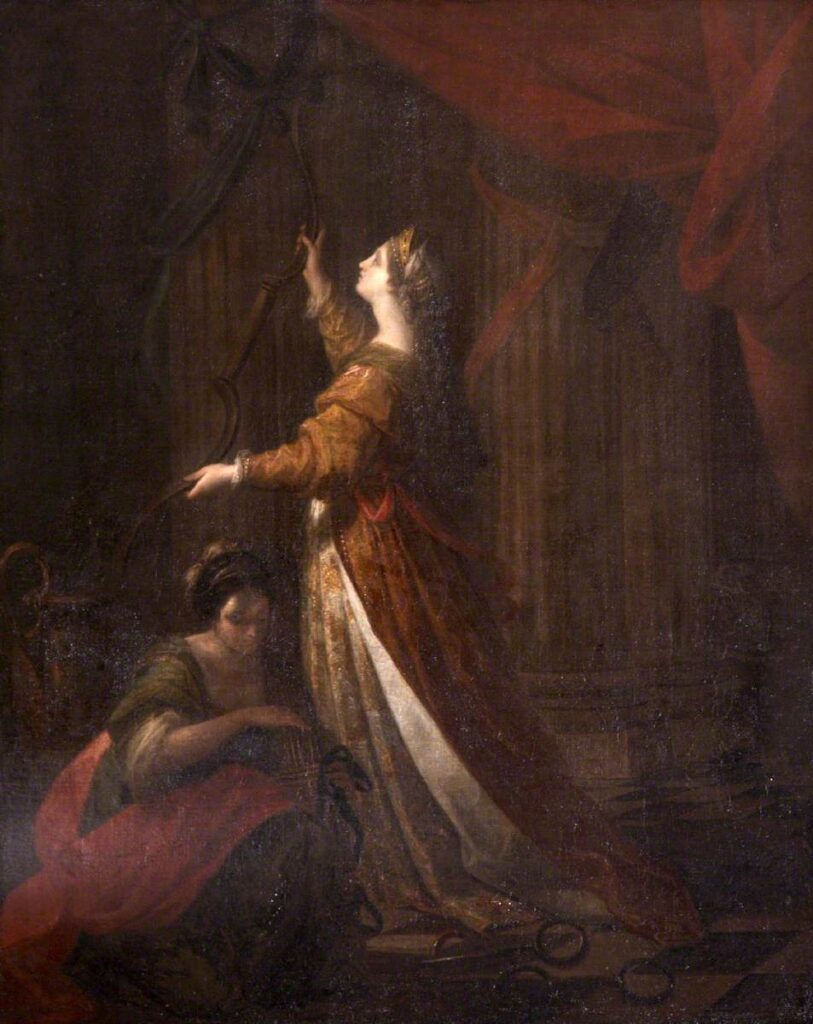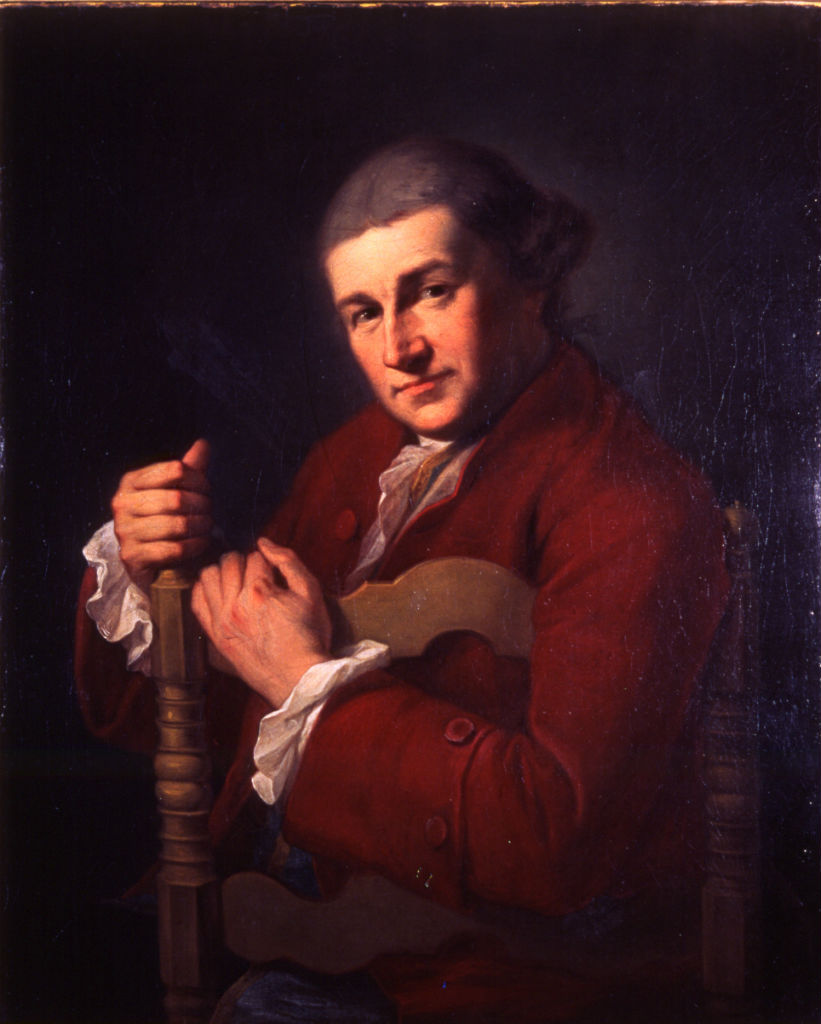Ariadne Abandoned by Theseus, before 1782
I immediately show him the Titian. “I’m already incorporating Titian’s techniques on my newest canvas,” I say as he studies the painting. “Especially his use of light.”
Then we go into my studio so I can show him the new painting, Ariadne Abandoned by Theseus. She sits by the wide expanse of the sea—his ship in the far distance, sailing toward the horizon—as young Cupid weeps at her feet. But she is not weeping. The light on her breast, exposed between the folds of her gossamer chemise, will outshine even the brilliance Titian painted into his Bacchus. I explain that I’ve painted her numerous times, but never accompanied by a collapsed, grief-stricken Cupid. Here, her outstretched arms and radiant breast will highlight the courage with which she faces her own pain. All women, I believe, need such courage.










